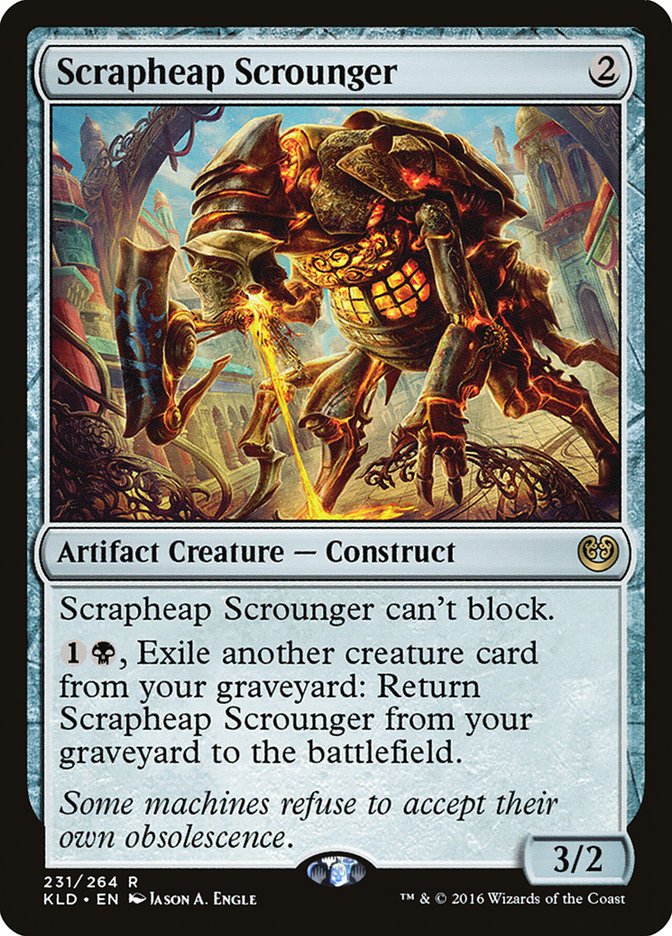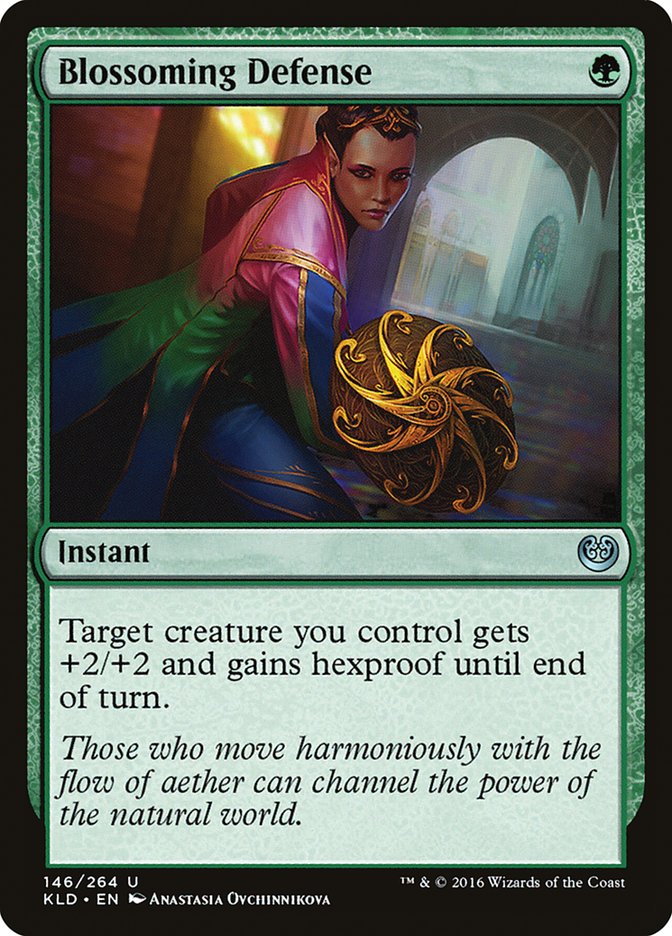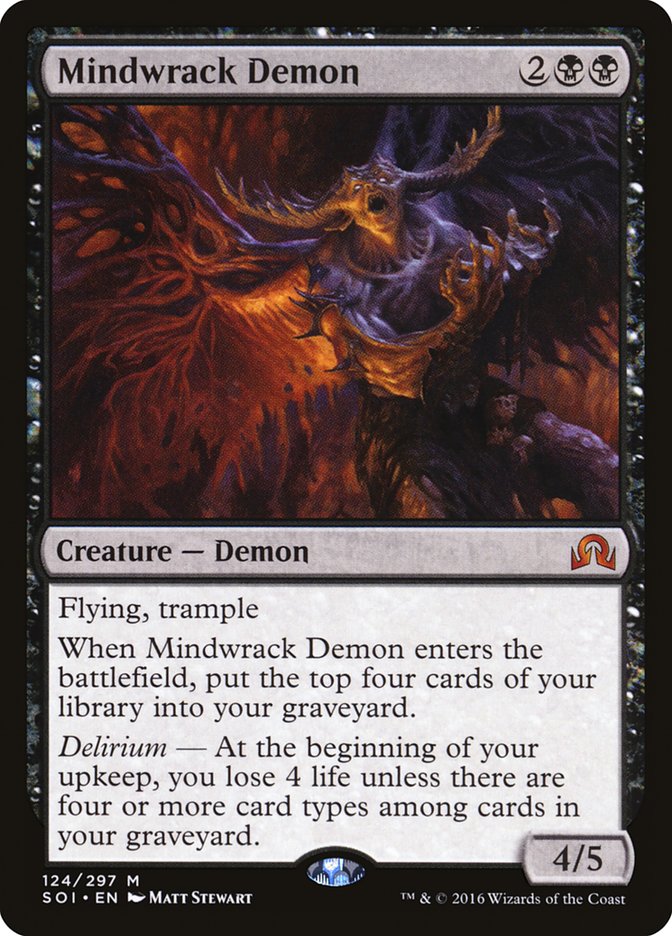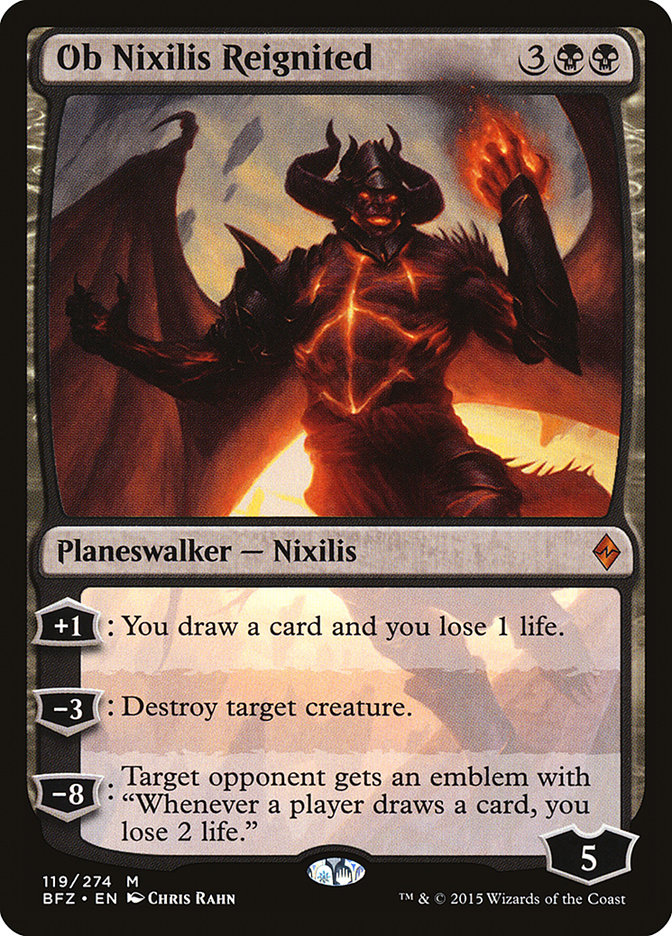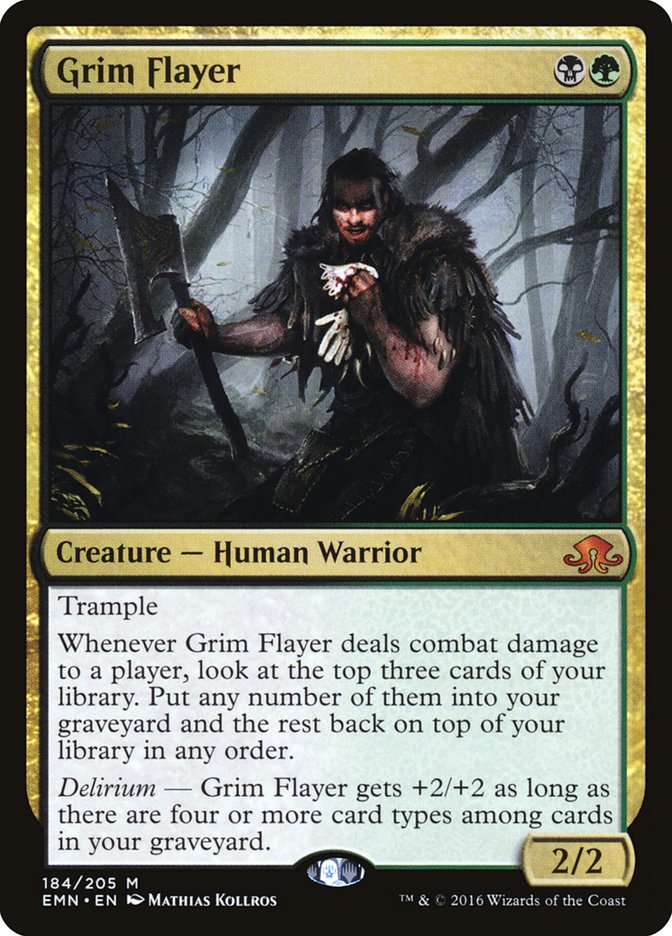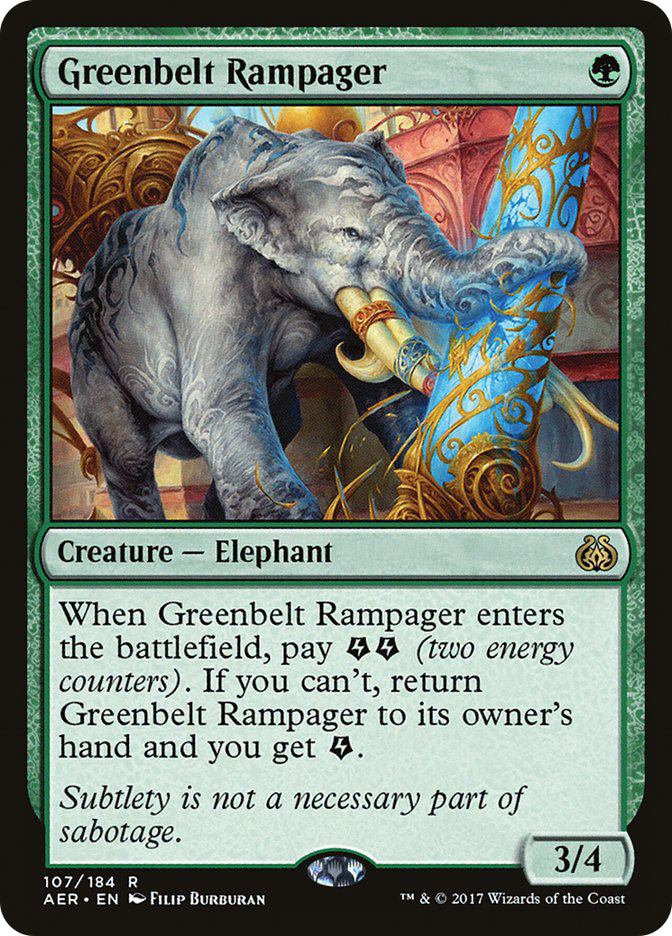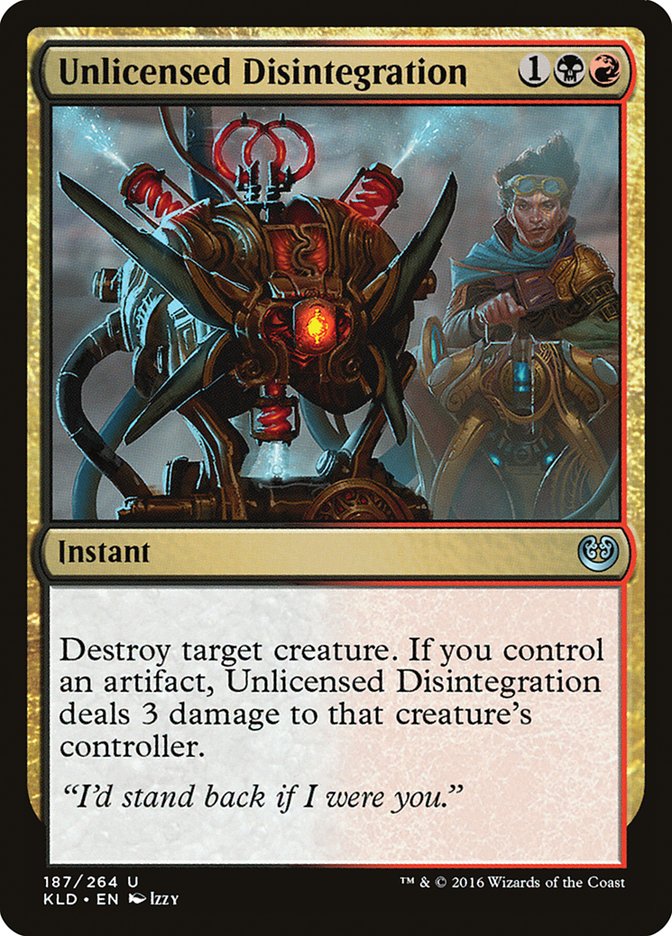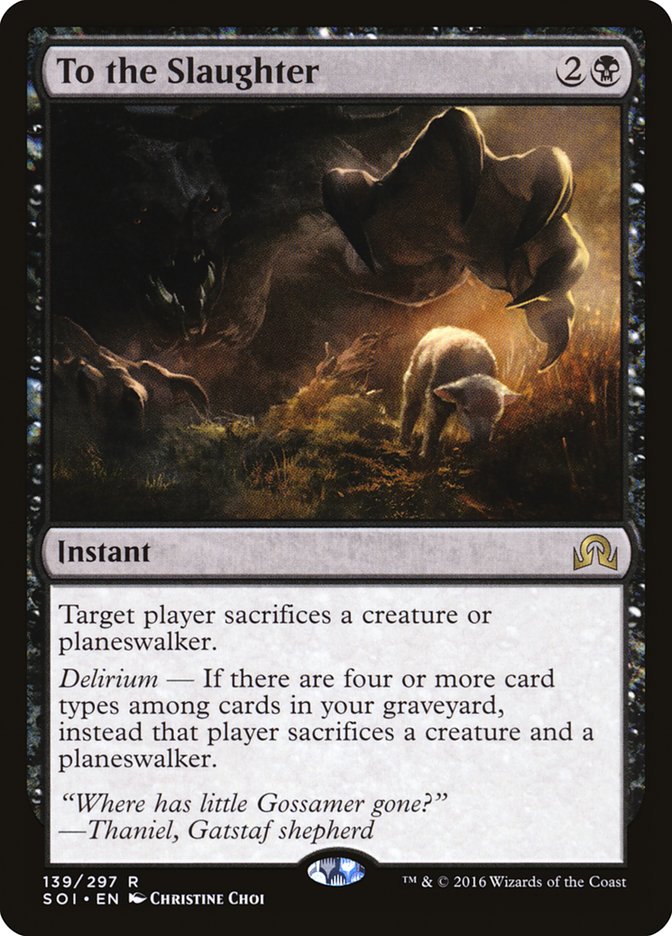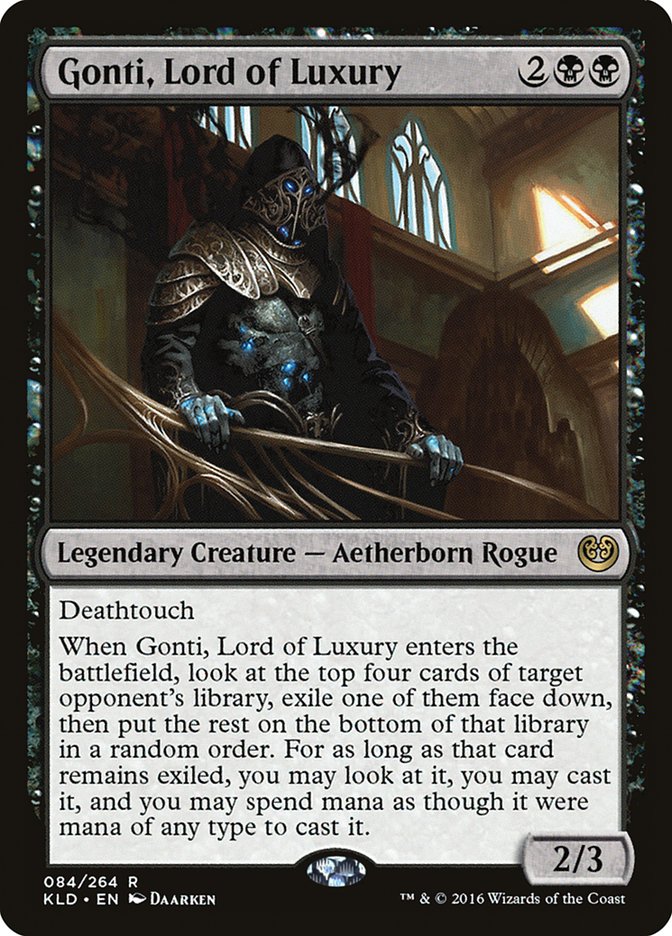During the Pro Tour this past weekend, I was doing my best to get back there myself. After choosing to focus on the SCG Tour instead of playing PPTQs, RPTQs, and Grand Prix, I found myself at home this weekend without a lot to do. After losing in the Top 8 of SCG Richmond, all I wanted to do was figure out this Standard format. And, after a long hiatus from Magic Online, I found myself buying cards for B/G Constrictor and trying to find the best iteration.
If you read my article last week, I talked a lot about the current Standard format. Saheeli Rai and B/G variants were the bulk of what I played against at, so my goal was to build the version of B/G that stood the best chance of beating both. I talked to a few friends and played a lot of Magic Online Leagues in preparation for the Magic Online PTQ this past Saturday. It has been a long while since I played a Constructed PTQ, and it felt good fighting for something more than money. I found it strange, wanting to play on the Pro Tour again after a few years away.
The two cards that I added to the deck that made the most impact were these little buggers:
Both of these cards were phenomenal against Jeskai Saheeli. Their easiest way to take control of a game is to use Harnessed Lightning or Fumigate to kill your creatures, giving them enough time to cast Torrential Gearhulk. Scrapheap Scrounger does double duty here, both enduring Fumigate and continuing to punch through damage in the face of spot removal.
Blossoming Defense helped punch through those last few points of damage in the face of Harnessed Lightning or even Immolating Glare. It also gave you a way to out-tempo some of the more aggressive decks by being a foil to Unlicensed Disintegration or allowing some of your cheaper creatures to finish off Gideon, Ally of Zendikar in a pinch. Drawing more than one was usually a death sentence, so I kept the number low in order to keep from drawing too many copies.
After putting up some reasonable results with Scrapheap Scrounger and Blossoming Defense, you can understand how awkward it was hearing just how many people brought Mardu Vehicles to the Pro Tour. And, after much consideration, I opted to continue playing the version of the deck I was most comfortable with. While Scrapheap Scrounger isn’t too good in the mirror, or against Mardu Vehicles, it was one of the best threats I could have in my deck against a control strategy. It came down early enough to put real pressure on my opponents, and the few removal spells in the format that exile creatures were seeing very little play. And even if they did happen to draw one of their exiling removal spells, Blossoming Defense would offer valuable protection.
The rest of the deck is pretty familiar to you by now, I’m sure.
Creatures (24)
- 1 Tireless Tracker
- 4 Grim Flayer
- 4 Verdurous Gearhulk
- 4 Scrapheap Scrounger
- 4 Winding Constrictor
- 3 Rishkar, Peema Renegade
- 4 Walking Ballista
Lands (23)
Spells (13)

I ultimately lost in the Top 4 to the eventual winner, who was playing a normal-ish-looking version of the same deck. When you start trimming on removal spells that can kill Mindwrack Demon, you can fall pretty far behind. That was one concession I had to make early on in testing. The mirror is fairly draw-dependent, and one player can become overwhelmed in a hurry if they ever stumble. And if you’re unable to draw the right removal spells at the right time, a Verdurous Gearhulk is lights-out. Being on the play/draw is also a big deal. An early rush of cheap creatures backed by Fatal Push can be too much to handle while on the draw if you don’t have a Fatal Push yourself.
My only two losses in the tournament were to B/G variants, and I don’t know if there is too much you can do to actually improve the matchup without drastically changing the functionality of the deck. Brad Nelson’s version, featuring Servant of the Conduit, could be the answer. Accelerating into your bigger threats can give you a big advantage, so long as those big threats aren’t easily answered by Grasp of Darkness or generic removal. Two-for-one threats like Ob Nixilis Reignited or Skysovereign, Consul Flagship a turn early are a big deal against the creatures B/G decks tend to play. Not many generate card advantage, so having a way to kill them before they accrue a significant advantage later in the game is key. That’s why Fatal Push is such a huge card in the mirror.
While I only played against Mardu Vehicles once in the tournament, I did defeat it, along with two copies of Cesar Segovia’s B/R Aggro deck that started off 8-0 at the Pro Tour. The general theme here is that you have to establish a battlefield presence. Whether that means an early Grim Flayer or Winding Constrictor is irrelevant. Any creature you cast will likely be bigger than the ones they cast. Blossoming Defense can help you gain a foothold on the battlefield, protecting one of your creatures and saving yourself some precious life points. If the Mardu Vehicles deck is able to stick a Gideon, Ally of Zendikar and you have no creatures on the battlefield, the game is all but over. Even if you have a Ruinious Path at the ready, the tempo gained from the 2/2 creature generated will likely be enough to turn the game significantly in their favor.
Shock is also surprisingly annoying, as one of your primary sources of aggression is Grim Flayer. You don’t usually have time to wait for it to become a 4/4, as your deck isn’t all that well-equipped to get delirium in the early turns. In fact, Grim Flayer hitting the opponent is one of the easiest ways to actually acquire delirium, so casting it early is generally correct. If you want to cast another creature to help protect yourself from Shock, I wouldn’t blame you, but the upside of having your Grim Flayer survive is almost too high.
One thing I’d like to try in this deck is building it to be much more aggressive. We’re already playing Scrapheap Scrounger, so I don’t think it would be that big of a stretch to play Heart of Kiran. I watched Heart of Kiran do a ton of damage at the Pro Tour, even in the face of removal. Heart of Kiran would act like a solid replacement for Smuggler’s Copter, which gave the deck a way to survive mass removal. It also allowed Blossoming Defense to be a gigantic blowout, since your opponent would have to hold open mana to kill it. While it is significantly harder to crew, we could potentially build our deck in such a way that allows us to utilize the powerful, new vehicle.
Since the PTQ, I’ve done a considerable amount of testing in preparation for Grand Prix Pittsburgh this weekend. Magic Online, while being visually unimpressive, offers a unique experience for serious Magic players. Tough competition is hard to come by in the real world, and especially so at midnight or later. So over the last two weeks, I’ve gotten to try out a ton of different versions of all the major Standard archetypes. A few have stood out to me, but few more than the deck Martin Juza piloted to a Top 8 finish at Pro Tour Aether Revolt.
Creatures (19)
- 2 Tireless Tracker
- 4 Longtusk Cub
- 4 Voltaic Brawler
- 4 Scrapheap Scrounger
- 4 Greenbelt Rampager
- 1 Rishkar, Peema Renegade
Planeswalkers (4)
Lands (20)
Spells (17)

The clear over-performers, in my mind, are Greenbelt Rampager and Heart of Kiran. This deck is full of cheap creatures that can power Heart of Kiran, and it even plays enough planeswalkers to have explosive turns that involve killing a creature and then attacking for huge chunks of damage. While Greenbelt Rampager isn’t exactly “cheap,” costing two energy to stay on the battlefield, it can stay around long enough to crew any Vehicle in the deck before bouncing back to your hand. And, at the very least, it is a 3/4 for three green mana that you can pay for over the course of multiple turns.
At the most, Greenbelt Rampager is a one-mana 3/4 creature that doubles as an energy engine to fuel the likes of Longtusk Cub, Harnessed Lightning, and even Voltaic Brawler. After sideboarding, bouncing it to turn on Revolt for Fatal Push allows for some swingy turns. Creatures that would normally put up big roadblocks, like Mindwrack Demon, are not very effective.
I was overly impressed by Greenbelt Rampager after watching it in both this Jund Aggro deck and the B/G variants that focused more on energy. Greenbelt Rampager is clearly a solid card in any strategy that wants to use energy on a recurring basis, whether that means Glint-Sleeve Siphoner or just Longtusk Cub. But, as we’ve talked about already, I think it is at its best when fueling crew for cheap, hard-hitting Vehicles.
The ability for this deck to morph into a planeswalker aggro deck is staggering for any control opponent. You have so many ways to fight sweepers like Fumigate that it is almost a bad card against you. Scrapheap Scrounger, Heart of Kiran, Fleetwheel Cruiser, and a smattering of planeswalkers can all wreak havoc on an unsuspecting control opponent, and especially so if they aren’t trying to combo you with Saheeli Rai.
So why didn’t Martin Juza win the Pro Tour? Well, that’s because this deck isn’t exactly built with Mardu Vehicles at the forefront.
Creatures (22)
- 4 Thraben Inspector
- 1 Thalia, Heretic Cathar
- 2 Pia Nalaar
- 4 Scrapheap Scrounger
- 4 Toolcraft Exemplar
- 3 Inventor's Apprentice
- 4 Veteran Motorist
Planeswalkers (3)
Lands (23)
Spells (12)

Before the Pro Tour, the major focus in Standard was on beating B/G and Saheeli Rai variants. Those were the two top-performing strategies in the previous two weeks on the SCG Tour. I don’t know of anyone who thought that Mardu Vehicles would show up in the massive numbers that they did, but it wasn’t hard to figure out why once you watched the deck obliterate opponent after opponent on Saheeli Rai.
The early aggressive starts coupled with efficient, damage-dealing removal was likely too much for any normally-built Saheeli Rai deck to overcome. Heart of Kiran and Aethersphere Harvester / Cultivator’s Caravan played a huge role in helping those decks beat sweepers, but the true power lay in leveraging the awesome power of Gideon, Ally of Zendikar.
Like most new Standard formats over the past year and a half, people seem to forget that Gideon, Ally of Zendikar is the best card in Standard. White decks are particularly vulnerable to mass removal and spot removal without some way to gain a foothold on the battlefield. If you watched coverage of the Pro Tour, you’ll see just how quickly all that removal became irrelevant once Gideon, Ally of Zendikar hit the battlefield. If the opponent wasn’t able to kill it immediately, they were nearly dead right then and there.
The one saving grace keeping Gideon, Ally of Zendikar in check was Unlicensed Disintegration. The awkward part here is that all the Mardu Vehicles decks get the best card (Gideon, Ally of Zendikar) and the best removal spell (Unlicensed Disintegration). So how are we supposed to fight these decks if they have a ton of early pressure, great removal, and planeswalkers that can invalidate a strategy that would normally be pretty good against it?
My gut tells me that a B/G Constrictor deck could be the answer, but it is a tough balancing act to make sure it can still beat Jeskai Saheeli. Scrapheap Scrounger is not a card you want against the mirror or against Mardu Vehicles, as you’d much prefer all of your threats have the ability to play offense or defense. Being unable to block is a huge deal when you’re trying to race against stuff like Gideon, Ally of Zendikar or an opposing Verdurous Gearhulk. But the allure of Scrapheap Scrounger is why I played the deck in the Magic Online PTQ in the first place. Without it, your matchup against any control deck is significantly worse. So we must find a middle ground if we are to beat Mardu Vehicles, Saheeli Rai, and B/G variants.
Is Scrapheap Scrounger good enough to put in the sideboard? I’m not convinced that it is. Is it too big of a liability to have in the maindeck? If not, do we want to max out on four copies? These are questions I don’t have an answer to just yet. My gut tells me that more people are going to try to build control decks with Mardu in mind, and that I should just stick to my guns. The mirror match can be tricky, but having a plan involving increased amounts of removal definitely helps. That’s one reason why I regretted not having To the Slaughter (or even just one or two copies of Murder).
With Grand Prix Pittsburgh this weekend, I’ll be looking to improve the B/G Constrictor deck I played in the Magic Online PTQ. First and foremost, I want to make sure I can handle Mardu Vehicles. One major step is having enough answers for Heart of Kiran, which is why I was leaning on Natural State over any of the other answers. One-mana removal spells are a huge deal against Mardu Vehicles, as they allow you to curve more easily. With six lands that can enter the battlefield tapped and four more than enter tapped after your third land, making sure you can cast all your spells in a timely manner is more important than making sure you can permanently kill Scrapheap Scrounger (Natural Obsolesence) or gain two life (Appetite for the Unnatural).
In all honesty, I don’t think changing the deck significantly makes all that much sense, but there are some holes you can shore up to make life a little easier. I’m almost assuredly going to play some form of B/G, and the deck is probably going to look very similar to this:
Creatures (24)
- 2 Mindwrack Demon
- 4 Grim Flayer
- 4 Verdurous Gearhulk
- 3 Scrapheap Scrounger
- 4 Winding Constrictor
- 3 Rishkar, Peema Renegade
- 4 Walking Ballista
Lands (23)
Spells (13)

The main change here is a recognition that Tireless Tracker isn’t very good against Mardu Vehicles. Not only do you have very little time to start cracking Clues, but the two toughness on a three-mana investment does not play defense very well. On top of that, Tireless Tracker isn’t really a “three-drop,” since you almost always want to wait until you can cast it and play a land afterwards. Instead, we’re going for a higher-impact Mindwrack Demon at two copies, though I will acknowledge that it isn’t a great card in the deck. It’s a big body that can pressure Gideon, Ally of Zendikar and survive most of the damage-based removal in the format.
Obviously, adding a four-drop to the deck will make us a bit more susceptible to Unlicensed Disintegration, but we are already getting destroyed by that card. I’m banking on them being forced to use it early on Grim Flayer or Winding Constrictor and having a big follow-up to keep their Gideon, Ally of Zendikar in check.
Gonti, Lord of Luxury is a card I’ve been wanting to try in the mirror. Any two-for-one built into a card, and especially one that has deathtouch, is especially appealing in a battle of attrition. I’ve even considered cutting the second copy of Kalitas, Traitor of Ghet for another Gonti. Kalitas, Traitor of Ghet is a fine Magic card for the B/G mirrors, but it’s pretty awkward when you’re forced to cast it without the ability to kill an opposing creature. Gonti, Lord of Luxury solves that problem by acting as a roadblock that also finds you another answer or another threat.
There’s a good chance I end up cutting Blossoming Defense before the tournament, but I really liked having access to it in the PTQ. It made a lot of my plays feel safe, and led to some pretty surprising blowouts. Of course, them knowing I have Blossoming Defense would force them to play differently against me, opting to main-phase some removal spells while I’m tapped out. In the PTQ itself, very few people killed my Winding Constrictor while I was tapped out, instead waiting to “get” me after I played a less-powerful card like Walking Ballista in an attempt to gain an advantage from the ability. Savvy players won’t necessarily make that mistake.
Blossoming Defense is also a liability against Mardu Vehicles at times. If you’re unable to leave open mana to protect your creature, it will end up being a dead card, and that’s not something you can afford. While protecting your Grim Flayer could be the difference between winning the game and losing to a Gideon, Ally of Zendikar, I’m not sure I actually want that card in my deck against them. Countering an Unlicensed Disintegration is cool and all, but what about when it is rotting in my hand while they continue to develop their side of the battlefield? I’d much rather have a removal spell in that situation.
The trick is finding the balance between beating Mardu Vehicles, the mirror, and the control decks. Blossoming Defense is obviously a fine card to have against all three, but it is usually worse than the third or fourth copy of Fatal Push against the mirror and Mardu Vehicles. On the other hand, Fatal Push is mostly useless against control decks, so it is possible that you just need to make that sacrifice if you don’t expect a lot of control decks.
That’s all I got for this week. If you have any insight into any form of B/G for Grand Prix Pittsburgh, I’m all ears. If you have any questions, I’ll be happy to answer them.


